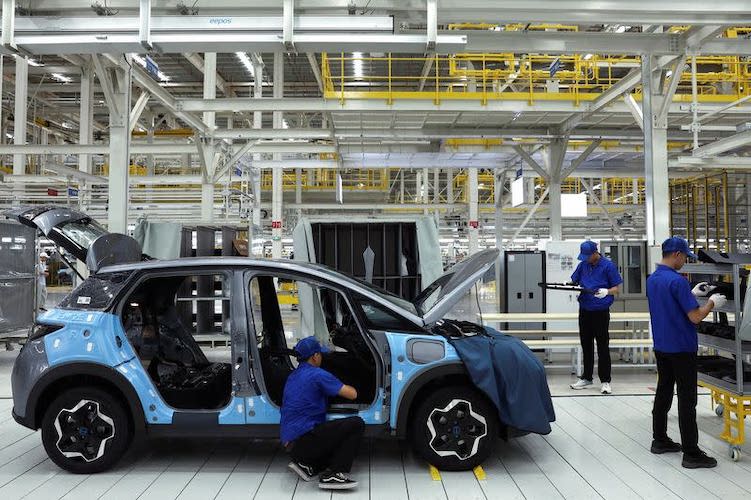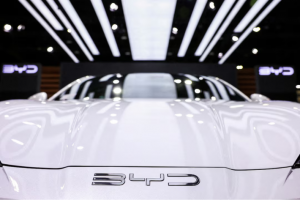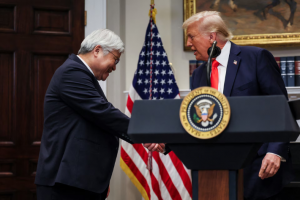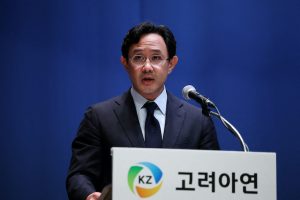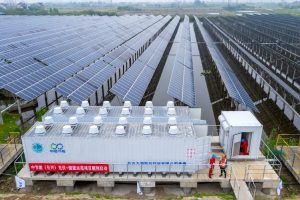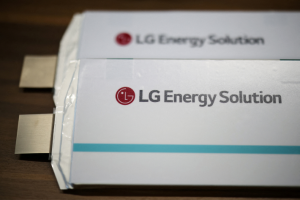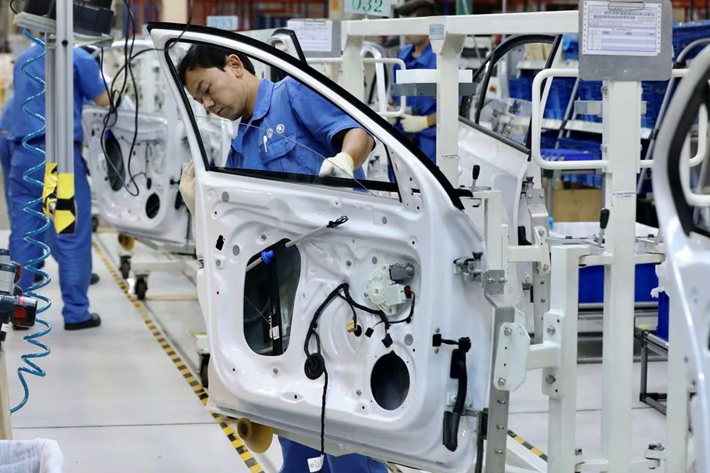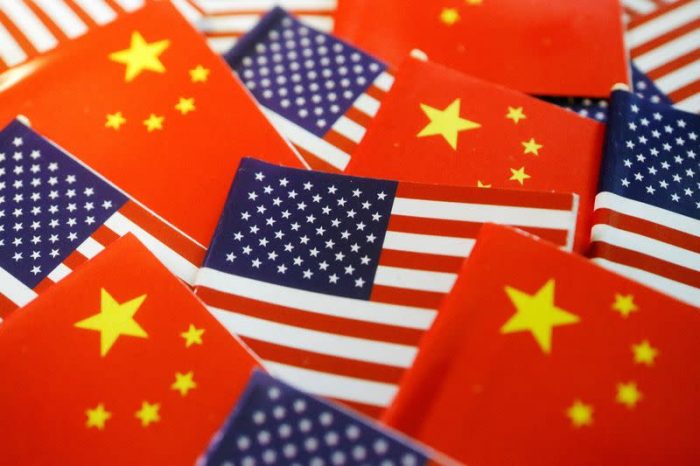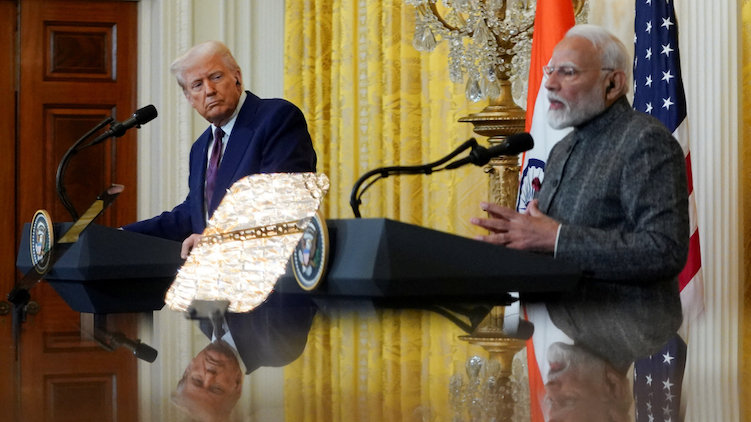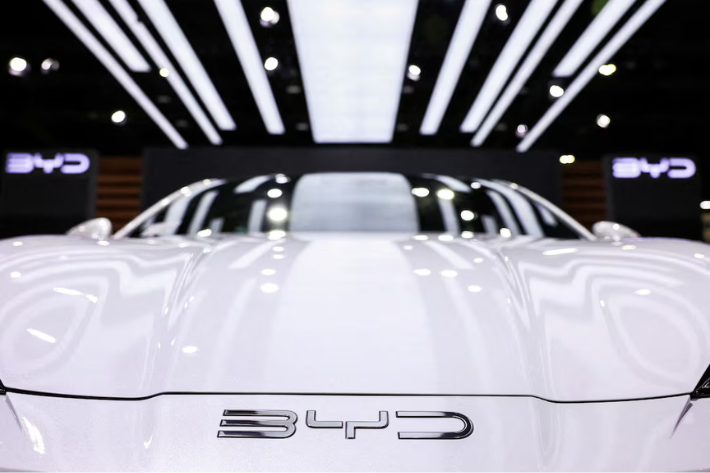Carmakers in China have rewritten the rules of manufacturing, which has helped them seize control of their domestic market and make major inroads in countries around the world.
One of the reasons for their rapid rise on the global car scene is the speed at which they can and are developing new models. Forget the strict rules of testing new parts and models done so extensively by Toyota and other leading carmakers.
China is roaring ahead regardless – adjusting its vehicles rapidly along the way – and it appears to be working.
ALSO SEE: China’s Criticism of Price Wars Sheds Light on Xi’s ‘Waning’ Power
In October 2023, for example, Chinese automaker Chery ordered engineers and suppliers to travel on short notice to proving grounds in Zhaoyuan, Shandong Province.
Over a weekend, they planned an overhaul of the suspension and steering on the Chinese version of Chery’s Omoda 5 SUV for Europe, a key market in its global expansion. The problem: The car had been designed for China’s smooth streets and slower speeds. Now, it had to withstand Europe’s winding, bumpy roads.
Just six weeks later, Chery started shipping the European-spec Omoda 5 to dealers, complete with new steering, traction control, brakes, vibration dampers and tyres.
“You can forget doing something that fast with a European automaker,” said Riccardo Tonelli, Chery’s senior vehicle-dynamics expert, who led the overhaul. “It’s impossible.”
Tonelli, who previously worked at an Italian carmaker and a Korean tire maker, estimated Western manufacturers would take well over a year to push similar improvements through their comparatively bureaucratic organizations.
Development time slashed
Chery’s Omoda makeover exemplifies the disruptive speed and flexibility of Chinese automakers, which has helped them dominate their home market, the world’s largest, from their long-running foreign competitors. Now, China’s rising auto giants are racing to expand globally, with Chery as the leading exporter. EV giant BYD, China’s largest automaker, poses a bigger long-term competitive threat, industry executives say.
China’s emerging automotive dominance owes largely to a singular manufacturing achievement – slashing vehicle-development time by more than half, to as little as 18 months for an all-new or redesigned model. The average age of a Chinese-brand electric or plug-in hybrid model on sale domestically is 1.6 years, versus 5.4 years for foreign brands, consultancy AlixPartners found.
That speed has rattled legacy automakers, which have historically redesigned vehicles about once every five years, or once a decade for pickups.
This account of how Chinese automakers outmaneuvered global rivals is based on interviews with more than 40 people, including current and former executives, employees and investors at five Chinese and seven global automakers and more than a dozen industry experts. Reuters visited BYD’s Shenzhen headquarters, factories of Chinese EV brands Zeekr and Nio, and European R&D centres of Zeekr and Chery.
The US and Europe have imposed tariffs to shield their car industries, alleging China unfairly subsidizes EVs. But Chinese automakers’ development speed has emerged as the biggest factor in their cost and technological advantages over foreign competitors, Reuters found. Shaving years off vehicle development cycles saves capital, lowers prices and ensures Chinese players have the freshest models during a technological revolution, executives and industry experts said.
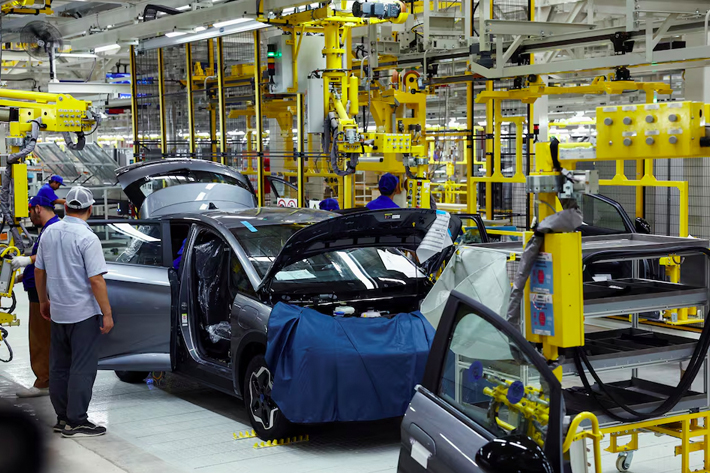
Rapid development speed shakes global market
The urgent pace is baked into BYD’s structure. Taking advantage of China’s lower labor costs, BYD deploys about 900,000 employees to accelerate design and manufacturing. At its headquarters, BYD promotes a work-focused life through company-subsidized housing, transportation and schools. Unlike most automakers, BYD makes most of its own parts rather than relying on suppliers, another factor that speeds development and lowers costs.
Chinese automakers’ employees often work six 12-hour days a week, said Peter Matkin, Chery’s chief international-brands engineer. “Global automakers have no idea what they’re up against,” he said.
BYD and Chery each increased sales by about 40% globally in 2024, as U.S. EV pioneer Tesla saw its first annual sales decline, due largely to its aging model lineup. This year, Tesla’s sales are falling as CEO Elon Musk alienates many customers with his right-wing political activities.
Neither Tesla nor Musk commented for this report. Musk said last year that Chinese carmakers could “demolish” competitors.
Chinese automakers’ gains have come at the expense of global rivals. From 2020 to 2024, the top five foreign automakers in China — Volkswagen, Toyota, Honda, General Motors and Nissan — collectively saw their passenger-car sales in that market plunge from 9.4 million annually to 6.4 million, according to data provided to Reuters by consultancy Automobility.
Today’s top five Chinese automakers saw sales more than double to 9.5 million last year from 4.6 million vehicles in 2020.
China’s leading foreign automaker, Volkswagen, now develops vehicles with China’s Xpeng, a fast-growing EV maker. Other global automakers, including Toyota and Stellantis, have pursued similar partnerships with Chinese counterparts to learn how they operate.
CEOs and other executives at global automakers including Ford, VW, Stellantis, GM, Renault and others have openly acknowledged the fierce competitive threat posed by Chinese rivals, often citing their development speed. VW’s China chief Ralf Brandstaetter, at April’s Shanghai auto show, touted efforts to speed development of models to compete with Chinese EVs and hybrids, saying it aimed to “be as fast and as competitive as a Chinese startup.”
That’s a reversal: Until about a decade ago, China’s automakers often copied foreign rivals. Chery once made Chevy lookalikes. BYD made Toyota knockoffs.
After mimicking foreign vehicles, China’s industry started scrutinizing competitors’ engineering processes and devising their own different — and faster — paths to product launches, said Allen Han, a professor of automotive studies at Shanghai’s Tongji University and a veteran of Ford and two Chinese automakers.
Ferocious competition
Chinese engineers have essentially concluded that global industry-standard vetting processes are a wasteful pursuit of “excessive quality,” Han said.
Instead, Chinese automakers release good-enough vehicles quickly, with far fewer prototypes and a fail-fast philosophy mirroring Silicon Valley tech startups, industry executives and experts said. They lean more on simulations and artificial intelligence than real-world testing for safety and durability. They treat model launches more like the start than the end of development, adding frequent upgrades based on consumer feedback.
This urgency stems in part from fierce competition that’s creating more losers than winners: 93 of 169 automakers operating in China have market shares below 0.1%, according to research firm JATO Dynamics. Few make a profit, a struggle exacerbated by overcapacity. With supply exceeding demand, automakers are slashing prices.
“The survivors will be hugely powerful,” said Xpeng President Brian Gu. “But it’s a very cruel and competitive process.”
China’s EV-price war sparked alarm after BYD in May discounted 20 models, including its entry-level Seagull, which was selling for 55,800 yuan ($7,789). Great Wall Motor Chairman Wei Jianjun called the industry “unhealthy,” citing an increasingly common industry practice of dumping surplus new-vehicle inventory by selling zero-mileage cars as “used”, at steep discounts in China.
To offset losses, China automakers are racing to boost exports globally. In many countries, their vehicles fetch prices on par with comparable models from global automakers – and about double the retail prices that Chinese cars sell for at home.
“Traditional automakers can’t compete on price because the Chinese will always win,” said Phil Dunne, managing director of Stax consulting, who has worked with global and Chinese automakers. But in markets such as Europe, established global automakers “still have a better understanding of the customer; they have invested heavily in new models and their products are getting better.”
BYD churning out new, refreshed vehicles
At BYD’s Shenzhen headquarters, cars and buses carrying workers traverse a dozen gates into the campus, a warren of low-rise buildings. Laundry hangs on balconies of employee-housing blocks. Youthful employees busy themselves inside offices and product-testing warehouses, many wearing blue uniforms, untucked shirts and tennis shoes.
“We’re into that kind of young energy, young talent,” said spokesperson Delilah Zhou, who lives in one of many company-subsidized apartments.
The vibe is glitzier at a BYD museum on the campus. Visitors including Reuters journalists recently test-drove two top-of-the-range BYD electric vehicles, the Yangwang U8 SUV and the U9 supercar – a $233,000, 1,300-horsepower two-seater that dances and jumps.
The scene underscored BYD’s ambition to compete in every global market and segment. The automaker increased its China sales from about 400,000 cars in 2020 to more than 3.7 million last year with a dizzying array of models. BYD said it added 200,000 employees – more than General Motors’ entire workforce – in one hiring binge between August and October 2024.
BYD’s market capitalization is $141 billion, almost triple that of VW but still a fraction of Tesla’s near-$1 trillion value, by far the highest of any automaker.
BYD’s product-launch pace, however, leaves Tesla’s in the dust, and BYD sells more than double the number of cars annually. Tesla has five models, only two of which sell in volume. Since Tesla launched its best-selling Model Y in 2020, BYD has rolled out more than 40 all-new vehicles and more than 139 updated or refreshed models, according to JATO data.
Unlike Tesla, BYD also has a thriving gas-electric hybrid business. BYD offers so many models and variants, under four brands, that spokesperson Zhou struggled to recall them all.
“So many,” she said with a laugh. “We have a different strategy than Tesla.”
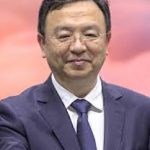
BYD’s founder and chairman, Wang Chuanfu, has been as pivotal to BYD as Musk has been to Tesla. Yet he is more focused on cars than Musk, the brash South African-born tycoon with a sprawling portfolio of other industrial ventures.
Wang spends many nights in Shenzhen employee housing, eats simple meals and works long days, sometimes in a BYD uniform, two BYD investors and others who know him told Reuters. Unlike many Chinese executives, who are chauffeured around, he often drives himself, said Zhang Wei, a former top-10 stakeholder.
“His life is all about BYD – nothing else,” said Zhang. “This guy is cheap. He’s saving money for you.”
Wang has built BYD’s immense workforce in part by paying modest salaries and recruiting from second-tier colleges, the investors told Reuters. Wang operates with a flat leadership structure with many direct reports, said Mark Blundell, BYD’s UK marketing manager.
“There are few layers between us and the chairman,” he said. “You get decisions quickly, giving us agility and speed.”
Another factor in BYD’s efficiency: its ability to make most components itself rather than buying from suppliers. The Seal electric sedan, for instance, contains 75% in-house parts, compared with 46% for Tesla’s Model 3 and 35% for VW’s electric ID.3, according to an AlixPartners analysis.
‘Go fast’ approach
Engineers at BYD and other Chinese automakers are willing to change designs and components later in the model-development process than foreign competitors, which employ strict timelines and vetting milestones.
That contrast was evident when Toyota entered a joint venture with BYD to develop Toyota’s bZ3 electric sedan, a China-only EV released in early 2023, according to two Toyota employees. Toyota’s team, one of the people said, was “flabbergasted” by BYD’s willingness to make design and part changes late in development.
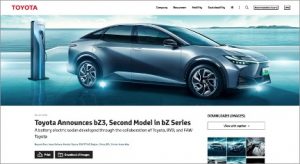
The bZ3 electric sedan, seen in the Toyota ad left, a China-only EV released in 2023, emerged from a joint venture between the Japanese automaker and BYD. The companies’ contrasting approaches were evident during the vehicle’s development, according to two Toyota employees.
Toyota, renowned for vehicle reliability and exacting manufacturing processes, rarely makes significant changes once it has fixed a model’s specifications at the beginning of a four-year development process, the Toyota employees said. Unlike most Chinese automakers, Toyota typically builds six different prototype versions of a model and bulletproofs its reliability in tens of thousands of miles of test-driving.
Toyota engineers came away impressed with BYD’s go-fast approach but wary of risks to long-term reliability, the Toyota staffers said. BYD, one said, offers a “bag full of lessons” but few that Toyota would adopt. Skipping prototypes and road-testing and embarking on late-stage design changes, the person said, amount to “a big no-no in our world” because of worries about “an impact on quality.”
The automaker continues to question and monitor BYD’s long-term durability, the person said.
Toyota declined to comment on the differences between its approach and BYD’s.
Wang told reporters as early as 2008 that BYD would one day outsell Toyota, the world’s largest automaker. Recently, BYD told investors it plans to sell half its vehicles outside China by 2030 – a goal that, if achieved, could mean BYD takes Toyota’s crown.
But BYD could struggle to sustain its breakneck sales-growth pace outside China – especially if other major markets erect trade barriers like the United States, where Chinese-brand vehicles are all but banned.
“It will be pretty challenging for BYD to reach that goal without access to the US market,” said Tu Le, founder of consultancy Sino Auto Insights, of BYD’s global sales target.
Legacy carmakers focused on safety, reliability
Zeekr, a premium brand of Chinese giant Geely, has worked to perfect its flexible manufacturing approach – a process originally developed by Japanese automakers that allows building a variety of models on one line. On a Reuters visit to its factory in the eastern city of Ningbo, one line shifted without pause between models including Zeekr’s 001 sedan, 009 minivan and the Polestar 4, an electric sedan from another Geely brand.
The vehicles’ journey from idea to assembly is accelerated by round-the-clock engineering. Zeekr engineers in Shanghai and Hangzhou pass work at the end of each day to colleagues at its design center in Gothenburg, Sweden, enabling up to 20 uninterrupted hours of development, said Zeekr Vice President Yun Xu, a project manager for several models.
All major automakers have embraced digital design, virtual reality and artificial intelligence to varying degrees. But Chinese automakers such as Zeekr have pushed further into such technologies to slash development time, industry experts said.
“Being able to match their speed is the continuous challenge,” said Noone. Buick aims to cut model development time from four years to two, he said.
The Buick GL8, a premium minivan, remains a strong seller in the market for GM, which in recent years has seen a rapid China-sales decline.
GM told Reuters it has been taking steps to improve its product competitiveness in China.
Volkswagen is leaning on Xpeng and joint-venture partner FAW in China, as part of its plans to launch 30 EVs and hybrids by 2030. VW didn’t respond to questions about its China operation or development process.
Christian Hering, Zeekr’s chief platform architect for Europe, previously developed navigation software at a Volkswagen supplier for three years starting in 2017. VW’s real-world testing protocols were rigid, he said: Even slight software tweaks were treated like physical component changes – each requiring 25,000 kilometers (15,534 miles) of road-testing.
Hering said he once changed the color of the trees depicted in a Volkswagen navigation system. That simple switch required 75,000 kilometers of tests because it was for three markets – North America, China and Europe. “That’s why traditional carmakers can’t do speed,” he said.
Despite their short-cutting of vetting processes, China-brand models have consistently won top five-star safety ratings from Euro New Car Assessment Programme (NCAP), a leading crash-tester.
“Forget what you might think – that Chinese means lower quality or lower safety performance,” said Matthew Avery, Euro NCAP’s director of strategic development. The quality of modern Chinese-brand vehicles, he said, is “better than others.”
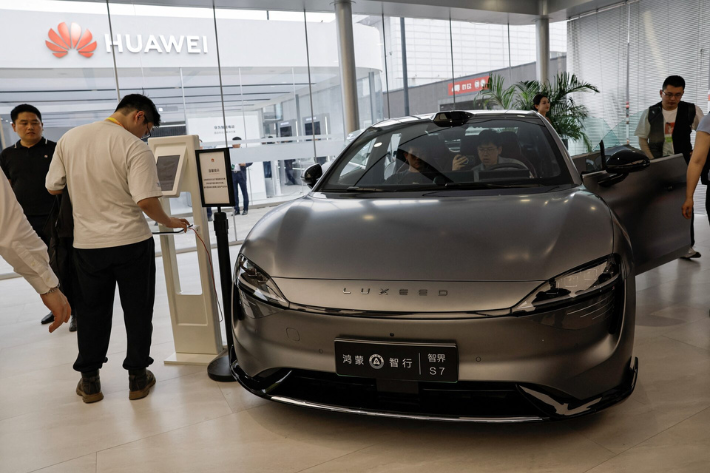
Chery biggest auto exporter
Most Western car buyers have never heard of Chery, but the fast-growing automaker poses the biggest immediate threat to global automakers in markets outside China.
The Wuhu-based manufacturer is China’s largest auto exporter, selling 1.14 million vehicles in over 100 countries outside China, close to half its total last year. Chery, which started exporting in 2001, has more experience in foreign markets than most Chinese peers, including BYD.
Another advantage is that Chery makes all kinds of cars, including internal-combustion-engine vehicles, which still dominate nearly every market beyond China. Last year, fully electric vehicles accounted for one-fifth of Chery’s sales.
Chery’s Omoda SUV line exemplifies that agnostic approach. The Omoda 5 that engineers raced to overhaul in 2023 for Europe was a gasoline model. But Chery also builds a fully electric Omoda 5. Later this year it plans to launch the larger Omoda 7 and Omoda 9, both plug-in hybrids.
Chery has big plans for European factories, including one in Spain in a joint venture with Spanish automaker Ebro that will launch production this year. The Chinese company expects European sales growth to require at least two more factories on the continent, said European managing director Jochen Tueting, a former Ford executive.
“Chery is a volume manufacturer,” he said, “so we want to grow big in Europe.”
Chery says it creates between five and 10 digital design proposals for every car it develops. If any model flops, the company can quickly replace it.
Matkin, Chery’s chief international brands engineer, pointed to the automaker’s Jaecoo 7, a premium plug-in hybrid SUV. If it failed to win over European consumers, he said, Chery would just drop the vehicle and start from scratch.
“If everybody said today, ‘We hate it,’ Chery will just change it,” he said. “It might still be called the Jaecoo 7, but it would look completely different. And it would be here in under two years.”
- Reuters with additional editing by Jim Pollard
ALSO SEE:
China’s BYD Cuts Back on EV Production, Factory Expansions
Local Officials in China Backed Export of ‘Zero-Mileage Used Cars’
Chinese EV Firms Are So Done With BYD
Flood of Cheap Chinese EVs in Brazil Sparks a Backlash
BYD Plants Seen Generating Big Sales in Europe, South America
China Carmakers Told to Explain Sales of ‘Zero-Mileage Used Cars’
China’s Intense EV Price War Taking a Toll on Car Dealers
BYD’s Big Gains Give Chinese EV Rivals a Giant Headache
BYD to Offer Tesla-Like Self-Driving Tech in All Models For Free
BYD Promises Driving Range of Over 2000km With New Hybrid Tech




